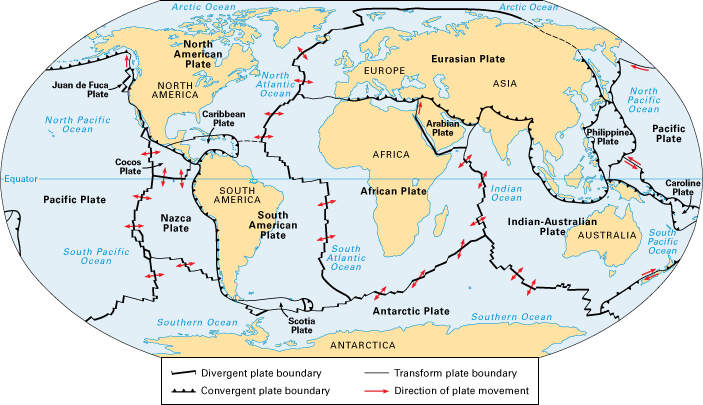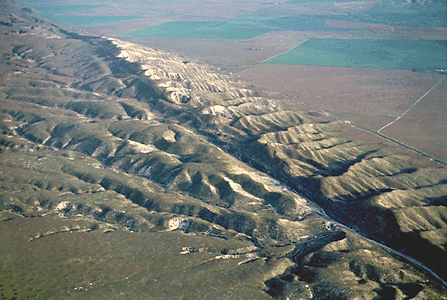Breaking Plates: New Boundary in Indian Ocean
Thursday, October 18th, 2012October 18, 2012
Two powerful earthquakes that jolted the floor of the Indian Ocean off the Indonesian island of Sumatra in April 2012 have given scientists an unprecedented opportunity to study a tectonic plate being torn in two. Tectonic plates are vast, irregularly shaped sections of Earth’s rocky outer shell that are in contant motion with respect to one another. In three analyses, international teams of scientists have described how the magnitude 8.6 and 8.2 quakes advanced a multimillion-year split in the Indian-Australian Plate and the birth of a new tectonic boundary. The Indian-Australian Plate includes the countries of Australia and India and the Indian Ocean.

Earth’s rocky outer shell consists of huge slabs called tectonic plates. Many plates include both ocean floor and dry land. The plates slowly move with respect to one another. They spread apart at divergent boundaries, move toward each other at convergent boundaries, and grind past one another at transform boundaries. (World Book map)
The scientists reported that the magnitude 8.6 earthquake opened at least four major seafloor faults (cracks in Earth’s surface) running for several hundred miles (kilometers) in only 2 minutes and 40 seconds. The sides of these faults slipped between 20 to 120 feet (6 to 37 meters) past each other. In some cases, the earthquake turned corners, creating a bizarre gridlike pattern of cracks in the seafloor. The scientists also discovered that a highly unusual number of aftershocks of magnitude 5 or above occurred in the six days following the quakes. Some were felt as far away as the western coast of North America.
Information from a global network of seismographs had told scientists almost immediately that the magnitude 8.6 quake, which occurred about two hours before the 8.2 quake, was the most powerful strike-slip quake ever recorded. During a strike-slip earthquake, blocks of rock slide past each other horizontally. The Sumatra temblors were also highly unusual because they occurred in the middle of a plate. Strike-slip quakes generally occur at the boundary between two plates, such as along the San Andreas Fault in California.

The San Andreas Fault, like the newly created faults in the Indian Ocean, is a strike-slip fault, a surface fracture where two blocks of rock are sliding past one another horizontally. (© Craig Aurness, Corbis)
The Indian-Australian Plate is breaking up because of tensions between its eastern and western sections. The eastern section, which includes India, is being thrust under the Eurasian Plate to the north. This action, which began tens of millions of years ago, pushed up the Himalaya. Meanwhile, the plate’s western section, which includes Australia, has continued to move to the northeast. From time to time, the tensions cause parts of the plate to suddenly slip past one another.
Two previous earthquakes in the area–a 2004 quake that produced a devastating tsunami in the Indian Ocean and another in 2005–probably put additional stress on the area of the plate that ruptured in April, the scientists reported. The recent quakes did not produce a tsunami because the sideways motion of a strike-slip quake does not cause the up-and-down movement of ocean water that powers the deadly waves. The scientists noted that the final breakup of the plate will occur only after millions of years and several thousand more earthquakes.
Additional World Book articles:
- Haitian earthquake of 2010
- When the Earth Moves (a Special Report)
- Geology (2005) (a Back in Time article)


